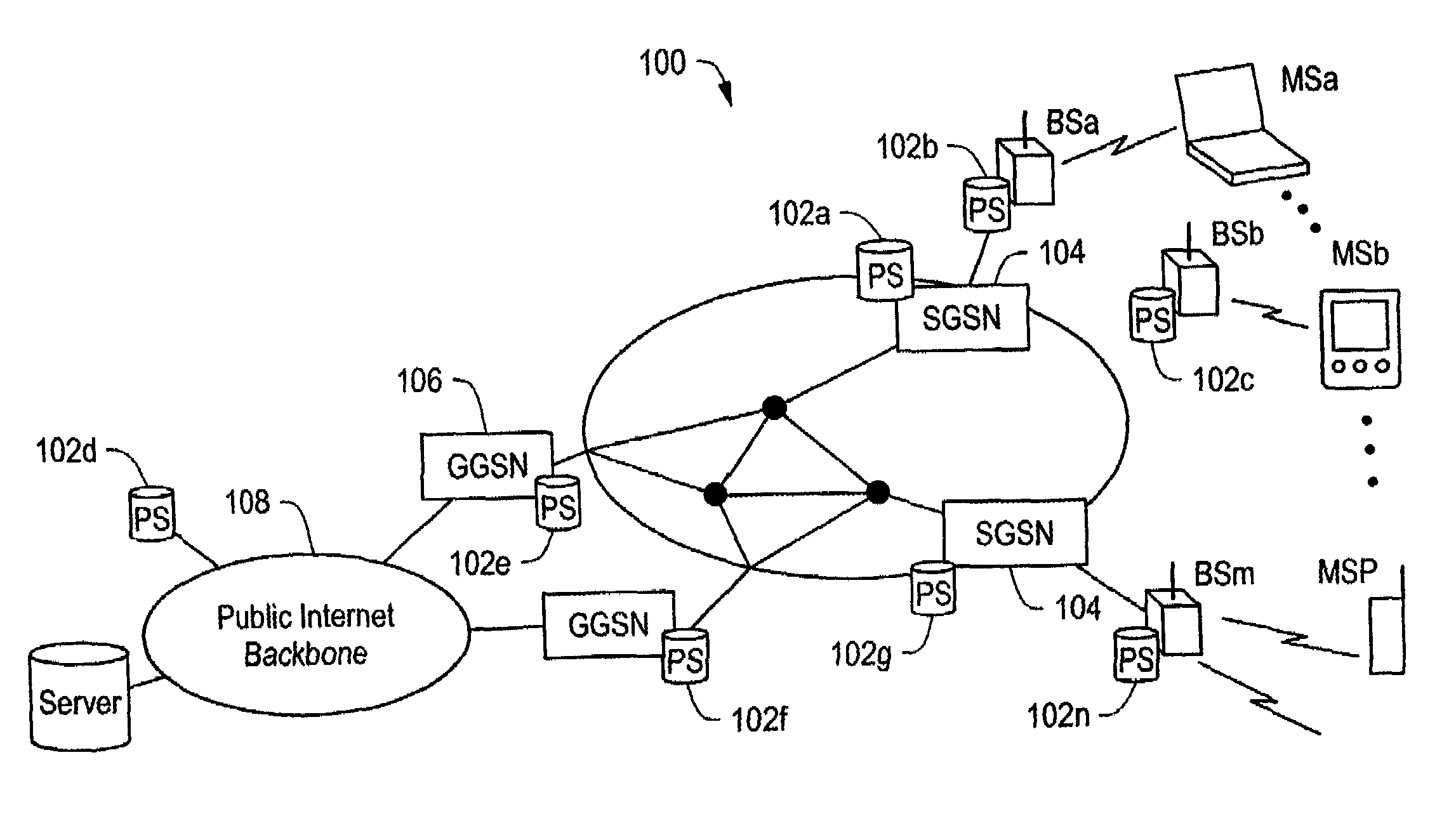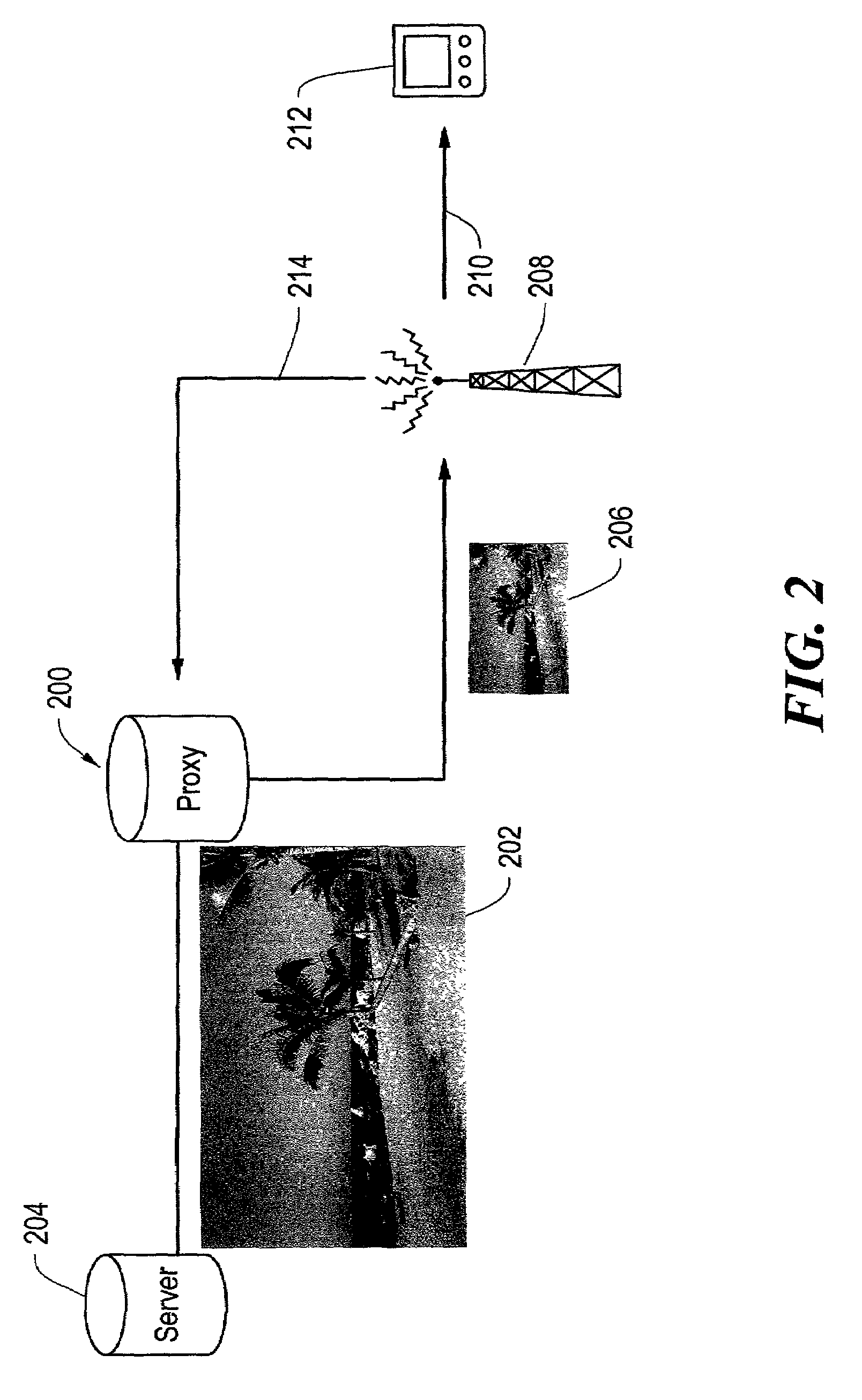Wireless network having link-condition based proxies for QoS management
a wireless network and qos management technology, applied in the field of wireless communication networks, can solve the problems of significant limitations in the data rate of wireless access experience, and achieve the effect of reducing conten
- Summary
- Abstract
- Description
- Claims
- Application Information
AI Technical Summary
Benefits of technology
Problems solved by technology
Method used
Image
Examples
Embodiment Construction
[0020]FIG. 1 shows a wireless network 100 having a plurality of proxy servers 102a–N for improving the quality of service (QoS) by transforming data, e.g., reducing data content, during periods of relatively high network congestion. The network 100, which is illustrated as a General Packet Radio Service (GPRS) network, includes a plurality of base stations BSa-M serving mobile stations MSa-P in respective coverage areas, e.g., cells. It is understood that mobile stations MS can include a variety of devices including wireless phones, computers, personal digital assistants (PDAs), etc. The base stations BS are coupled to respective Supporting GPRS Service Nodes (SGSNs) 104, which are served by one or more Gateway GPRS Service Nodes (GGSN) 106. The GGSNs 106 can be coupled to the Internet 108, such as the public Internet backbone, in a manner well known to one of ordinary skill in the art.
[0021]The proxy servers 102 can be located at a variety of locations in the network 100. Exemplary...
PUM
 Login to View More
Login to View More Abstract
Description
Claims
Application Information
 Login to View More
Login to View More - R&D
- Intellectual Property
- Life Sciences
- Materials
- Tech Scout
- Unparalleled Data Quality
- Higher Quality Content
- 60% Fewer Hallucinations
Browse by: Latest US Patents, China's latest patents, Technical Efficacy Thesaurus, Application Domain, Technology Topic, Popular Technical Reports.
© 2025 PatSnap. All rights reserved.Legal|Privacy policy|Modern Slavery Act Transparency Statement|Sitemap|About US| Contact US: help@patsnap.com



